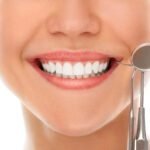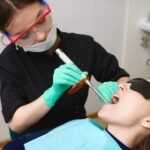As a dentist, I’ve seen firsthand the transformative impact of microdentistry and air abrasion on oral health care. This minimally invasive approach has revolutionized the way we treat dental decay, allowing us to preserve more tooth structure than ever before.
In fact, studies have shown that air abrasion, when used in conjunction with microdentistry, can significantly reduce the need for traditional drilling, enhancing patient comfort and yielding superior aesthetic results. With the advent of micro air abrasion, we’re able to target decay on a microscopic level, ensuring that only the unsound tooth structure is removed, leaving healthy enamel intact.
This technique not only improves the precision of our work but also supports the long-term health and strength of our patients’ teeth. Embracing these advancements reflects our commitment to providing the highest standard of care, prioritizing conservation and patient satisfaction. It’s a modern dental philosophy that’s gaining momentum across America, shaping the future of our profession.
Table of Contents
Benefits of Minimally Invasive Techniques
Air abrasion in microdentistry offers several benefits, including:
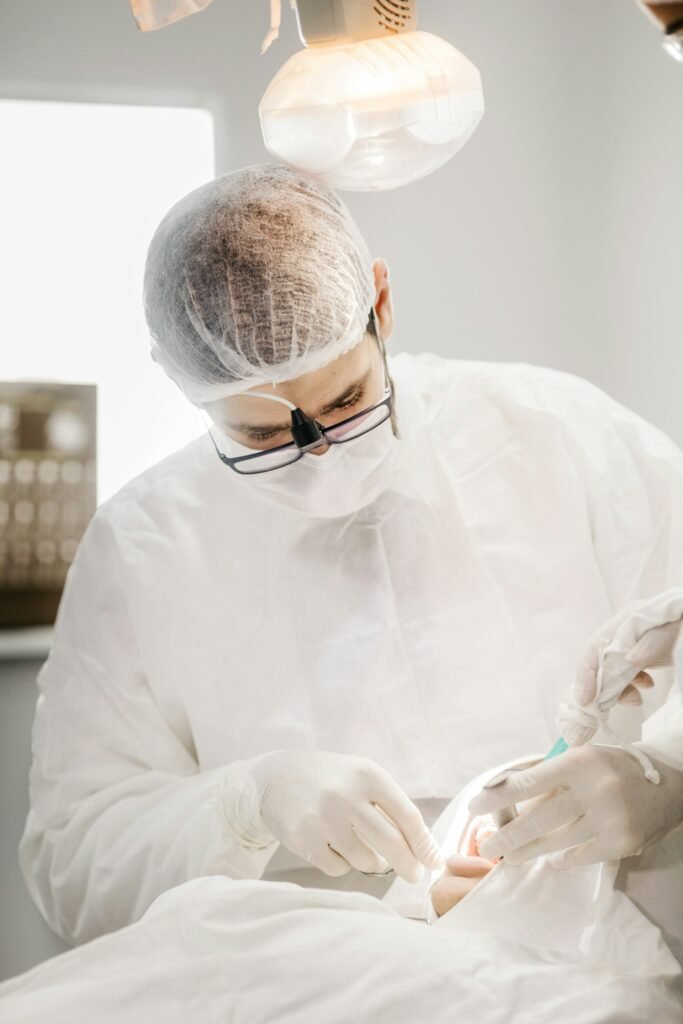
Overall, air abrasion in microdentistry offers a more comfortable and conservative approach to dental procedures, with a reduced risk of damage to surrounding tissues. It is a versatile technique that can be used for a variety of dental applications, and is often performed without the need for anesthesia.
Advancements in Dental Technology
Dental technology has rapidly evolved in recent years, revolutionizing the way procedures are conducted and improving patient outcomes. One of the significant advancements in dental technology is the development of minimally invasive techniques. These procedures require smaller incisions or less removal of tooth structure compared to traditional methods, resulting in reduced discomfort for patients and a quicker recovery time. Moreover, minimally invasive techniques enable dental professionals to preserve more healthy tooth structure, leading to improved bonding results and decreased risk of postoperative sensitivity.
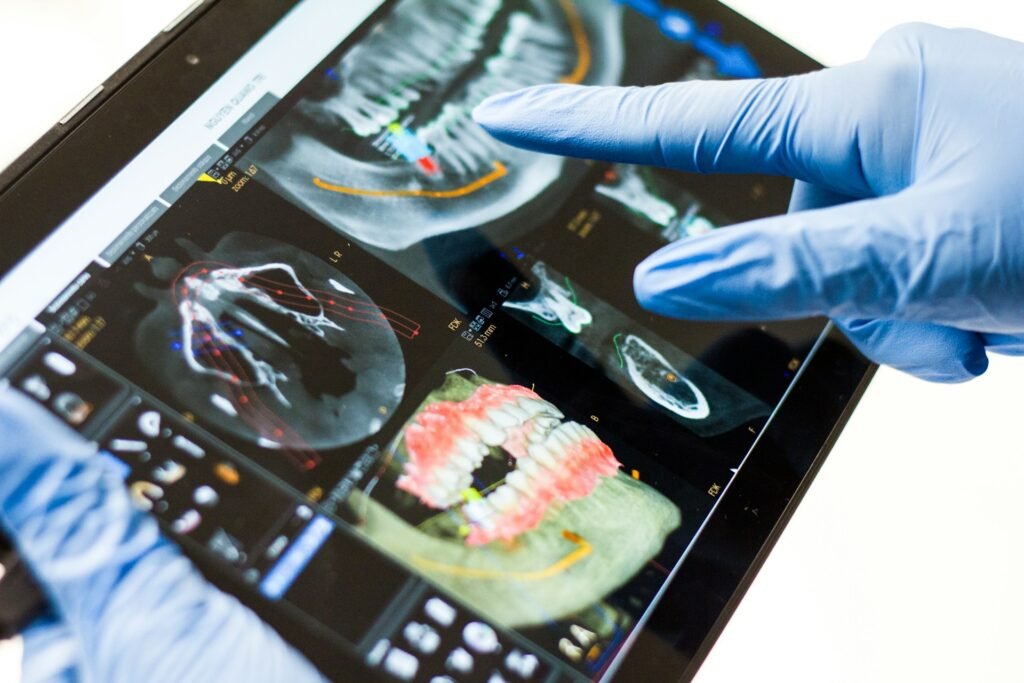
Another key benefit of advancements in dental technology is the enhanced precision it offers during dental procedures. With the introduction of innovative tools and equipment, dental professionals can now perform treatments with greater accuracy and efficiency. This improved precision not only ensures more successful outcomes but also contributes to enhanced esthetic results. In addition, the efficient removal of decay facilitated by advanced technology not only minimizes the need for anesthesia but also leads to safe and effective treatment options, ultimately increasing patient satisfaction and the longevity of dental restorations.
Precision in Dental Procedures
Precision in dental procedures is paramount to ensure the successful outcome of various treatments. With the use of advanced technologies and techniques, dentists can now achieve a higher level of accuracy in performing procedures such as tooth restoration, root canal therapy, and dental implants. The precise manipulation of tools and materials allows for the meticulous execution of each step, resulting in improved clinical outcomes and long-term success for patients.
Furthermore, the emphasis on precision in dental procedures not only benefits the immediate treatment but also plays a significant role in the longevity of dental restorations. Proper alignment, fitting, and placement of dental prosthetics and fillings reduce the likelihood of complications such as decay, fractures, or premature failure. By ensuring that each procedure is executed with the utmost precision, dental professionals can offer patients a higher quality of care and contribute to the overall health and well-being of their oral cavity.
Procedure of Air abrasion in microdentistry
Air abrasion is a technique used in microdentistry to remove decayed or damaged tooth structure. It is a minimally invasive alternative to traditional drilling and is also known as “microabrasion” or “particle abrasion.”The procedure for air abrasion typically involves the following steps:
- The dentist will first isolate the tooth using a rubber dam to protect the surrounding tissues from any debris generated during the procedure.
- The dentist will then use a handheld device to direct a stream of air and fine particles (usually made of aluminum oxide or silica) at the tooth.
- The particles will abrade the tooth surface, removing any decayed or damaged material.
- The dentist will then rinse the tooth with water to remove any remaining debris and check the tooth for any remaining decay.
- If necessary, the dentist may repeat the process or use other dental techniques to restore the tooth to its proper shape and function.
- Finally, the dentist will polish the tooth to smooth any rough edges and ensure a comfortable bite.
Air abrasion is a quiet and relatively painless procedure that often does not require anesthesia. It is also a conservative technique that preserves healthy tooth structure, making it a popular choice for patients who are anxious about dental procedures or who prefer a more minimally invasive approach. However, it may not be suitable for all cases, and your dentist will determine the best treatment option for you based on your individual needs.
Reduced Discomfort for Patients
Minimally invasive dental techniques have revolutionized the way we approach oral care, particularly in terms of reducing discomfort for patients. These advanced methods prioritize preserving as much healthy tooth structure as possible while effectively addressing dental issues. By minimizing the need for extensive drilling and invasive procedures, patients experience reduced pain and discomfort both during and after treatment, leading to a more positive overall dental experience.
Furthermore, the use of minimally invasive techniques in dentistry not only decreases patient discomfort but also accelerates the healing process. By focusing on precision and targeted treatments, these methods result in less trauma to the surrounding tissues, enabling quicker recovery times and reduced postoperative pain. Patients can now undergo various dental procedures with minimal discomfort and enjoy the benefits of efficient, gentle care that promotes their overall well-being.
Conservation of Healthy Tooth Structure
Minimally invasive dental techniques have revolutionized the field of dentistry by prioritizing the conservation of healthy tooth structure. By utilizing precise instruments and advanced technology, dentists can now focus on removing only the damaged or decayed portions of a tooth, while preserving as much of the healthy enamel as possible. This approach not only results in stronger and more durable dental restorations but also reduces the need for extensive procedures that would require the removal of more tooth structure.
The conservation of healthy tooth structure is crucial for maintaining the long-term health and integrity of a patient’s teeth. By minimizing the amount of tooth structure that is removed during dental procedures, dentists can help prevent future complications and the need for additional treatments. Patients benefit from this approach as it promotes overall oral health, preserves natural teeth, and contributes to a more aesthetically pleasing smile. Adopting minimally invasive techniques not only ensures the longevity of dental restorations but also enhances patient satisfaction by providing conservative yet effective treatment options.
Increased Patient Satisfaction
Minimally invasive techniques in dentistry have revolutionized the way dental procedures are performed, leading to increased patient satisfaction. These advanced approaches prioritize the conservation of healthy tooth structure while effectively treating dental issues. With reduced discomfort during and after procedures, patients experience a more pleasant dental visit, resulting in higher levels of satisfaction with their treatment outcomes.
In addition, the improved precision in dental procedures achieved through minimally invasive techniques contributes to enhanced esthetic outcomes and bonding results. Patients appreciate the meticulous attention to detail that these modern methods provide, leading to a greater sense of confidence in their dental restorations. By offering safe and effective treatment options that prioritize patient comfort and overall satisfaction, dental professionals can achieve increased long-term success in maintaining healthy smiles for their patients.
Improved Bonding Results
By utilizing minimally invasive techniques in dental procedures, practitioners have been able to achieve improved bonding results. These techniques focus on preserving as much healthy tooth structure as possible while effectively bonding restorative materials to the tooth surface. This approach not only enhances the longevity of the bonding but also reduces the need for extensive tooth preparation, leading to better aesthetic outcomes for patients.
Furthermore, advancements in dental technology have played a crucial role in enhancing bonding results. The use of adhesive systems and materials with superior bonding properties has revolutionized the way restorations are bonded to teeth, resulting in increased bond strength and durability. With precise application techniques and materials that promote optimal adhesion, dental professionals can now achieve superior bonding outcomes, ensuring the longevity and success of dental restorations.
Decreased Risk of Postoperative Sensitivity
Minimally invasive dental techniques have revolutionized the field of dentistry, offering numerous benefits, including the decreased risk of postoperative sensitivity. Postoperative sensitivity, often experienced after traditional dental procedures, can be a source of discomfort for patients. However, with the advent of minimally invasive approaches, this risk is significantly reduced, leading to improved patient comfort and satisfaction.
The decreased risk of postoperative sensitivity is attributed to the conservative nature of minimally invasive procedures, which aim to preserve as much healthy tooth structure as possible during treatment. By utilizing advanced technologies and techniques, dentists can achieve precise and efficient results while minimizing trauma to the surrounding tissues. This not only contributes to enhanced esthetic outcomes and improved bonding results but also promotes the longevity of dental restorations. Ultimately, the reduced risk of postoperative sensitivity is just one of the many advantages that make minimally invasive dental approaches a preferred option for both patients and dental professionals alike.
Enhanced Esthetic Outcomes
Enhanced esthetic outcomes in dental procedures play a significant role in enhancing a patient’s confidence and overall satisfaction with their smile. By utilizing minimally invasive techniques and advancements in dental technology, dentists can achieve precise and natural-looking results that are tailored to each individual’s unique smile. The conservation of healthy tooth structure during these procedures not only ensures the longevity of the restoration but also contributes to the enhanced esthetic outcome by maintaining the integrity of the natural teeth.
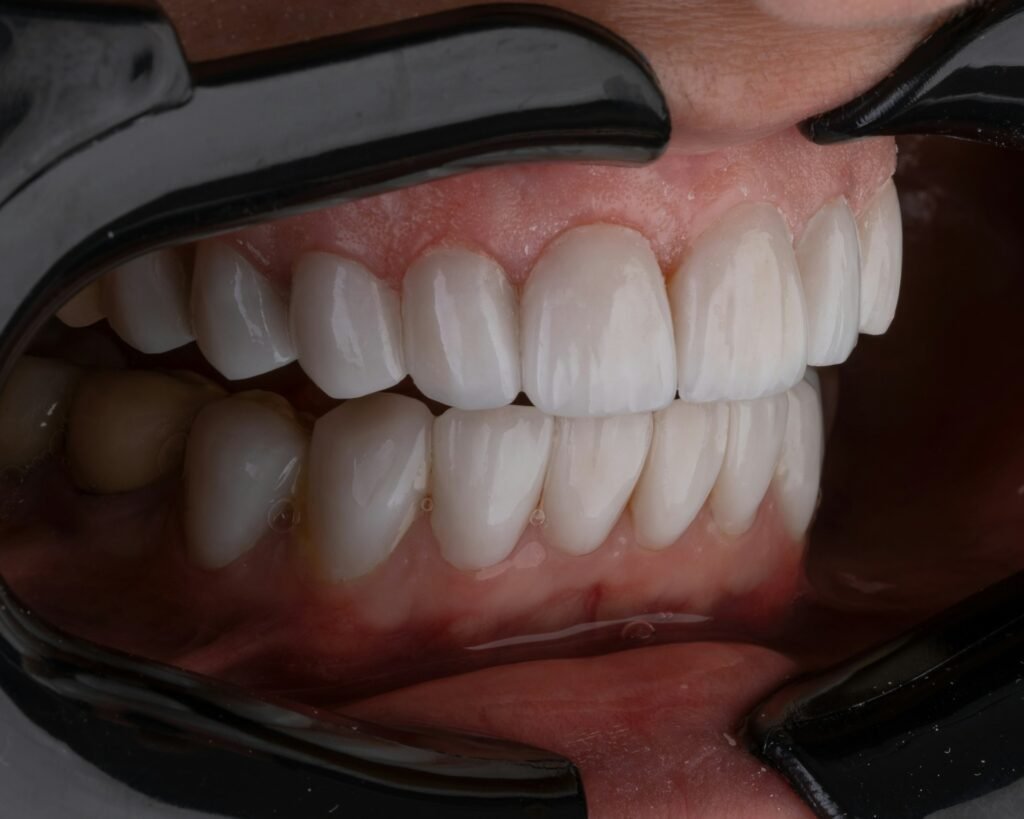
Patients undergoing dental treatments aimed at improving their smile often seek enhanced esthetic outcomes that blend seamlessly with their natural teeth. The use of minimally invasive techniques allows for efficient removal of decay and precise placement of restorations, resulting in improved bonding results and reduced risk of postoperative sensitivity. Furthermore, the focus on esthetics in dental procedures not only benefits the patient but also provides dental professionals with ergonomic advantages, leading to enhanced patient comfort and satisfaction throughout the treatment process.
Efficient Removal of Decay
Minimally invasive dental techniques have revolutionized the way decay is removed from teeth, offering a more conservative approach that preserves healthy tooth structure. By utilizing advanced tools and technologies, such as lasers and air abrasion devices, dentists can precisely target the decayed areas, resulting in efficient removal with minimal impact on surrounding teeth. This approach not only ensures a more accurate removal of the decay but also promotes better long-term oral health outcomes for patients.
The benefits of efficient decay removal extend beyond just the procedure itself. Patients experience reduced discomfort during treatment, as the minimally invasive techniques are gentle on the teeth and gums. Moreover, by conserving healthy tooth structure, these procedures contribute to improved bonding results and enhanced esthetic outcomes. Dental professionals also benefit from ergonomic advantages, making the process of decay removal more efficient and comfortable for both the dentist and the patient.
Safe and Effective Treatment Options
Minimally invasive treatment options in dentistry offer a safe and effective approach for patients seeking dental care. These techniques prioritize the conservation of healthy tooth structure while efficiently removing decay. By utilizing advanced technology and precise procedures, dentists can achieve optimal outcomes with minimized discomfort and decreased risk of postoperative sensitivity. Patients can experience enhanced esthetic results and improved bonding outcomes, leading to increased satisfaction and longevity of dental restorations.
Dental professionals also benefit from the ergonomic advantages of minimally invasive techniques, reducing strain and fatigue during procedures. This not only improves the overall experience for both patients and practitioners but also contributes to the efficient delivery of treatment. With minimized need for anesthesia and enhanced patient comfort, safe and effective treatment options in dentistry promote a positive environment for oral health care. By embracing these innovative approaches, dental practices can elevate the quality of care provided while prioritizing the well-being of their patients.
The table lists the various dental procedures which might use air abrasion.
| Treatment Option | Description |
|---|---|
| Dental Cleanings | Regular cleanings help remove plaque and tartar buildup, preventing gum disease and cavities. |
| Fillings | Fillings are used to repair cavities and restore damaged teeth, preventing further decay. |
| Crowns and Bridges | Crowns and bridges are used to restore damaged or missing teeth, improving function and appearance. |
| Root Canal Therapy | Root canal therapy is performed to treat infected or damaged tooth pulp, preserving the tooth. |
| Tooth Extractions | Extractions may be necessary for severely damaged or impacted teeth that cannot be saved. |
| Dental Implants | Implants are artificial tooth roots used to support dental prosthetics, such as crowns or dentures. |
| Orthodontic Treatments | Orthodontic treatments, such as braces or clear aligners, are used to correct misaligned teeth. |
| Oral Surgery Procedures | Oral surgery may be required for complex dental issues, such as impacted wisdom teeth or jaw surgery. |
Minimized Need for Anesthesia
Minimized need for anesthesia in dental procedures is a significant advancement that benefits both patients and dental professionals. With the advancements in technology and techniques, many dental treatments can now be performed with minimal or even no anesthesia, reducing the discomfort and anxiety often associated with traditional injections.
Patients who undergo minimally invasive procedures with little or no anesthesia experience a quicker recovery time and can often resume their daily activities immediately after the treatment. Furthermore, minimizing the need for anesthesia also reduces the risk of potential side effects and complications associated with its use, promoting a safer and more comfortable dental experience for individuals of all ages.
Ergonomic Benefits for Dental Professionals
Dental professionals work tirelessly to deliver quality care to their patients, often spending considerable time performing intricate procedures. The importance of maintaining proper posture and ergonomics in the dental practice cannot be overstated. By utilizing ergonomically designed equipment and adjusting their seating positions, dental professionals can significantly reduce the strain on their bodies during procedures, ultimately leading to improved comfort and longevity in their careers.
Incorporating ergonomic principles in the dental setting not only benefits the professionals but also enhances the overall patient experience. Proper ergonomics allow dental practitioners to work more efficiently and with greater precision, resulting in better treatment outcomes for their patients. Furthermore, by prioritizing their physical well-being, dental professionals can avoid potential musculoskeletal issues that may arise from prolonged periods of poor posture or repetitive movements.
| Ergonomic Benefits | Description |
|---|---|
| Improved Posture | Using ergonomically designed chairs and equipment helps maintain proper posture, reducing strain on the back, neck, and shoulders. |
| Reduced Risk of Musculoskeletal Disorders | Ergonomic equipment and workstations can help prevent injuries like carpal tunnel syndrome and tendonitis by minimizing repetitive motions and awkward positions. |
| Enhanced Comfort | Ergonomically designed tools and instruments can increase comfort during procedures, reducing fatigue and discomfort. |
| Increased Productivity | By minimizing discomfort and fatigue, ergonomic setups can enhance concentration and efficiency, leading to improved productivity. |
| Long-term Health Benefits | Implementing ergonomic practices can contribute to long-term health and well-being, reducing the risk of chronic pain and injuries. |
Enhanced Patient Comfort
One of the primary advantages of utilizing minimally invasive dental techniques is the notable enhancement in patient comfort. By employing precise and efficient methods that focus on conserving healthy tooth structure, patients experience reduced discomfort during and after dental procedures. This is particularly beneficial for individuals who may feel anxious or apprehensive about dental visits, as the minimized invasiveness of these techniques contributes to a more pleasant and comfortable experience overall.
Furthermore, the emphasis on enhanced patient comfort in minimally invasive dentistry aligns with the goal of providing comprehensive oral care while prioritizing the well-being of individuals. Patients can appreciate the gentle approach that minimally invasive procedures offer, as they often result in decreased postoperative sensitivity and quicker recovery times. By promoting a relaxed and comfortable environment for patients, dental professionals can foster trust and rapport with those seeking dental treatment, ultimately leading to increased satisfaction and positive outcomes.
Increased Longevity of Dental Restorations
With the advancements in dental technology, dental restorations have seen a significant increase in their longevity. This can be attributed to the precision in dental procedures enabled by minimally invasive techniques. By conserving healthy tooth structure and utilizing improved bonding results, the need for frequent restoration replacements has been reduced, leading to longer-lasting dental restorations.
Moreover, the decreased risk of postoperative sensitivity associated with minimally invasive techniques contributes to the enhanced longevity of dental restorations. Patients experience reduced discomfort during and after the procedure, promoting increased patient satisfaction. The efficient removal of decay, coupled with the safe and effective treatment options available, further enhances the esthetic outcomes and overall durability of dental restorations. These advancements not only benefit the patients by improving their oral health but also provide long-term cost-effective solutions in dental care.
Air abrasion compared with other techniques for dental caries removal:
| Method | Effectiveness | Invasiveness | Patient Comfort | Technique |
|---|---|---|---|---|
| Tungsten Carbide Bur | Effective | More invasive | Less comfortable | Mechanical |
| Sono Abrasion | Effective | Less invasive | More comfortable | Mechanical |
| Air Abrasion | Effective | Less invasive | More comfortable | Mechanical |
| Carisolv | Effective | Least invasive | Most comfortable | Chemical |
| Er: YAG Laser | Effective | Less invasive | More comfortable | Laser |
| ART (Atraumatic Restorative Treatment) | Effective | Less invasive | More comfortable | Manual |
This table reflects the study’s findings that all methods were effective in caries removal. However, the chemical methods, such as Carisolv, and less invasive mechanical methods like Sono Abrasion and Air Abrasion, were found to be less damaging to healthy tooth tissue and more comfortable for patients. The study utilized micro-CT scanning to examine mineral density and SEM images to assess the patency of the dentinal tubules after caries removal.
FAQs
How do minimally invasive techniques contribute to the increased longevity of dental restorations?
Minimally invasive techniques help preserve more of the natural tooth structure, resulting in stronger restorations that are less likely to fail over time.
What advancements in dental technology have helped improve the longevity of dental restorations?
Advancements such as digital imaging, CAD/CAM technology, and improved bonding agents have all played a role in enhancing the longevity of dental restorations.
How does precision in dental procedures impact the lifespan of restorations?
Precise dental procedures ensure that restorations are placed correctly, reducing the risk of complications and increasing their durability.
Can reduced discomfort for patients lead to longer-lasting dental restorations?
Yes, when patients experience less discomfort during dental procedures, they are more likely to follow post-treatment instructions, leading to better outcomes and increased longevity of restorations.
How does the conservation of healthy tooth structure contribute to the longevity of dental restorations?
Preserving as much healthy tooth structure as possible helps to support and protect dental restorations, leading to increased longevity.
What are some ergonomic benefits for dental professionals that can help improve the longevity of dental restorations?
Ergonomic equipment and techniques can help dental professionals work more efficiently and accurately, leading to better outcomes and longer-lasting restorations.



